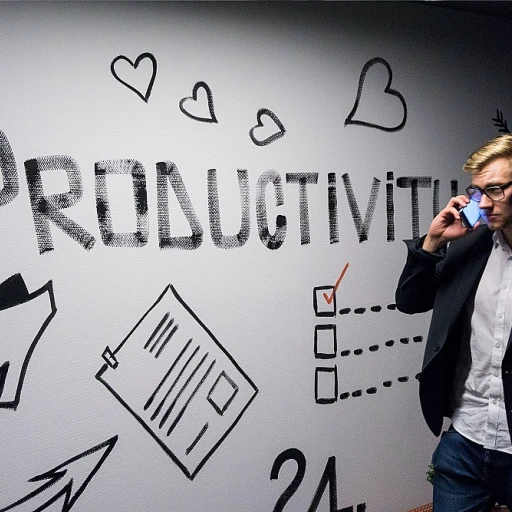
The Importance of Employee Orientation
The Significance of a Strong Start
Creating an effective employee orientation is crucial for any organization aiming to set a solid foundation for new hires. A seamless onboarding process can make employees feel welcomed and prepared to dive into their roles. Not only does this process introduce them to company policies and team members, but it also unfolds the company's mission and values.
An impactful orientation program helps a company in several ways. Firstly, it reduces the anxiety that new employees might feel, which in turn can improve job satisfaction right from day one. Proper orientation gives recruits a clear understanding of their roles and helps foster a connection with the organization.
Moreover, an organized orientation process is aligned with best practices for employee onboarding. By breaking down the orientation into understandable steps, the organization ensures that every new recruit understands the health safety protocols, benefits, and other essential elements of their job.
Whether it's through traditional, interactive, or digital means, having a well-thought-out orientation checklist is beneficial for both the employee and the company. Utilizing onboarding software or specific tools can further streamline this process, helping employees grasp all necessary information methodically and efficiently.
Traditional Orientation: The Basics
Foundational Practices in New Hire Orientation
When a company brings a new employee into the fold, the goal is to ease the transition from "new hire" to "valued team member." Traditional orientation provides the foundation upon which this transformation is built. It typically begins on an employee's first day and often follows a structured orientation checklist to ensure nothing is overlooked.
During this process, new hires are introduced to the organization's core values, company policies, and critical aspects of their role. This orientation type serves as an essential primer, offering a formal overview that familiarizes them with the company's operations while setting expectations.
A typical traditional orientation includes:
- An office tour, providing insight into the workspace layout and functional areas.
- Presentation of the company's health and safety standards to ensure employees feel well-versed in emergency protocols.
- A review of job-specific duties to clarify responsibilities and align with the organization’s goals.
- Discussions about employee benefits, helping hires understand not only the perks but also the importance of their overall well-being.
This type of orientation is structured, check-the-box focused, and ensures every aspect of the onboarding process is covered. Though the approach might lack personal engagement, it provides a standard baseline essential for consistency and comprehensive coverage of necessary details.
In essence, the traditional orientation serves as the backbone of the employee onboarding journey, laying a robust groundwork upon which other types of orientations can expand. It's especially effective in larger organizations where standardization helps maintain uniformity across multiple hires. For more on getting started right in any job, check out effective communication strategies with your boss.
Interactive Orientation: Engaging Employees
Engaging New Team Members with Interactive Onboarding
Incorporating interactive elements into the onboarding process can transform the way employees perceive their first few days at a new company. This approach to orientation encourages participation, facilitates relationship-building, and helps new hires to better understand their roles and the organizational culture.
Interactive orientations often include workshops, group activities, and other collaborative exercises that help employees feel connected to their new team and fosters an inclusive environment. This type of onboarding process also benefits from the use of interactive tools and software that streamline the experience for both the organization and the hires involved.
Consider these components to enhance the interactive onboarding experience:
- Icebreaker Activities: These are designed to help new team members become acquainted in a relaxed setting and reduce first-day jitters.
- Group Discussions: Facilitated discussions on team objectives, company policies, and job roles can provide a deeper understanding of organizational expectations.
- Simulation Exercises: Role-playing scenarios related to daily tasks and potential challenges can prepare hires for real-world situations they'll face.
By integrating these interactive methods within the broader onboarding plan, companies can ensure they're not just providing information but also inspiring engagement and commitment from their new employees. Successful implementation of such an orientation program, backed by best practices and supported by appropriate tools, can significantly enhance how employees view their initial days and, by extension, their long-term experience with the company. The benefits of a strong orientation program are manifold, enhancing both individual and organizational growth in the long run.
Digital Orientation: The Modern Approach
Going Digital: A Modern Twist on Orientation
The integration of digital technology into the employee orientation process has transformed the way organizations engage with their new hires. Digital orientation leverages various digital tools and software to streamline the onboarding experience and make the process more efficient and engaging for both the company and the new employees. One of the significant advantages of digital orientation is the ability to tailor the process to individual employee needs, which helps to ensure that all new hires feel supported from day one. This approach often includes interactive modules, video content, and online quizzes that allow employees to learn at their own pace and revisit information as needed. Such flexibility fosters a sense of independence and confidence among new team members. ### Key Features of Digital Orientation:- Interactive Modules: Engaging training sessions and activities that promote self-paced learning.
- Online Access: New hires can access company policies, orientation checklists, and health safety protocols through a digital platform.
- Customized Learning Paths: Personalized training programs based on the role and the level of the employee.
Feedback Mechanisms in Orientation
Incorporating Feedback for Effective Orientation
Feedback mechanisms are crucial in refining the orientation process. They help organizations understand how new hires perceive their onboarding experience and identify areas for improvement. Gathering feedback from employees ensures that the orientation program remains relevant and effective.
Here are some best practices for integrating feedback into your orientation process:
- Regular Surveys: Conduct surveys after the orientation program to gather insights from new hires. This can help in understanding their initial impressions and any challenges they faced during the onboarding process.
- One-on-One Meetings: Schedule meetings with new employees to discuss their experiences. This personal approach can provide deeper insights into how they feel about the orientation and their new role.
- Feedback Tools: Utilize onboarding software that includes feedback features. These tools can streamline the collection and analysis of feedback, making it easier to implement changes.
- Team Member Input: Encourage team members who participated in the orientation to provide feedback. Their perspective can be invaluable in understanding the effectiveness of the orientation program.
By actively seeking and implementing feedback, companies can ensure that their orientation programs not only meet the needs of new hires but also align with organizational goals. This approach helps in creating a supportive environment where employees feel valued and engaged from day one.












